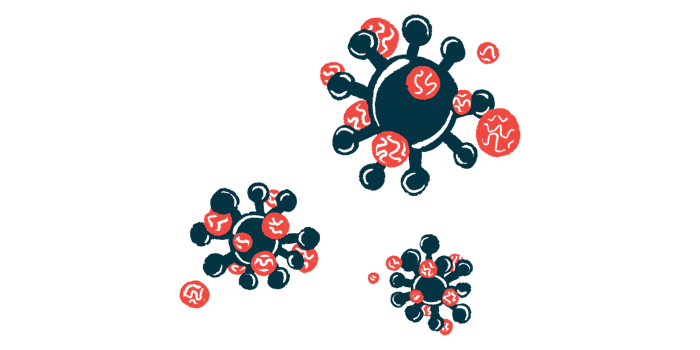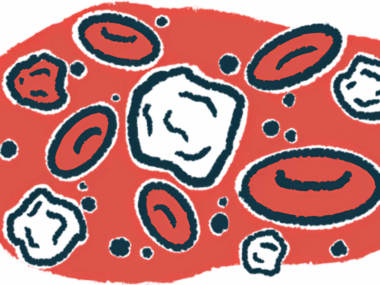New assay measures molecular immune response to EBV
Test could inform research, clinical trials targeting virus
Written by |

Scientists have created an assay that can measure immune cells’ inflammatory attack against the Epstein-Barr virus (EBV), a known risk factor for multiple sclerosis (MS).
Researchers found preliminary evidence that some MS treatments, but not others, may alter the immune system’s response to EBV.
The scientists said the assay could be used in combination with standard clinical measurements to profile a person’s inflammatory activity “with a view toward patient stratification and treatment selection,” and could also be useful in clinical trials of therapies targeting EBV and/or the anti-EBV immune response.
“In the short term, the benefit of this research is likely to be for the research community in MS,” Hugh Kearney, PhD, the study’s lead author and a neurologist at Trinity College Dublin School of Medicine, said in a press release.
The study, “Disease-Modifying Treatments for Multiple Sclerosis Affect Measures of Cellular Immune Responses to EBNA-1 Peptides,” was published in Neurology Neuroimmunology & Neuroinflammation.
Analysis of immune response to EBV
EBV is best known for causing infectious mononucleosis, though most cases manifest as an unspecific illness during childhood. The vast majority of humans will been infected with EBV at some point in their lives.
In recent years, studies have identified a history of EBV infection as one of the biggest risk factors for MS. It’s thought that the immune system’s attempt to fend off the virus may accidentally set the stage for MS to develop, though the details aren’t fully understood.
Researchers analyzing the immune system’s response to EBV generally focus on antibodies, which are proteins made by immune B-cells that can target the virus. But other parts of the immune system also play a role in battling the virus, largely by producing pro-inflammatory signaling molecules.
The new test involves collecting a blood sample from a patient and stimulating cells in the blood with an EBV protein called EBNA1 (EBV nuclear antigen 1). Researchers measure levels of two pro-inflammatory signaling molecules that are produced when immune cells respond to viruses: interferon gamma (IFN-gamma) and interleukin 2 (IL-2).
Because the test uses a whole blood sample, it doesn’t specifically determine what type of immune cell is making these inflammatory molecules, the researchers noted. But, they said, in a clinical context it’s more important to know how much inflammatory activity there is overall than which particular cells are involved.
The team used the assay to measure EBV reactivity in 145 people. Of the total, 86 had MS, 19 people had epilepsy, and 40 had no neurological diseases.
Levels of antibodies against EBV were higher in MS patients than in people in the other two groups, whereas there was no difference between people with epilepsy and those without disease. This finding is in line with other research showing that EBV may have a disease-causing role in MS, but not epilepsy, the researchers said.
The cell-based assay showed that production of IFN-gamma and IL-2 was significantly increased in MS patients compared with the other two groups, while the epilepsy and non-disease groups were again comparable. All three groups responded similarly to a similar assay testing reactivity against another virus, suggesting that the increased reactivity in MS is specific to EBV.
Different treatments show different results
Of the MS patients, 22 were untreated, while the rest were on treatments such as Tysabri (natalizumab), Tecfidera (dimethyl fumarate), Ocrevus (ocrelizumab), or Kesimpta (ofatumumab). Levels of antibodies against EBV were comparable regardless of treatment. However, there were notable differences in cellular responses to the virus.
Patients on Tecfidera, Ocrevus, or Kesimpta tended to have lower IFN-gamma and IL-2 levels. In fact, levels were comparable to those seen in epilepsy patients or people without disease. In contrast, cellular activity was higher in untreated patients and patients on Tysabri.
The researchers said this may be explained by how the therapies work. Tecfidera, Ocrevus, and Kesimpta are designed to reduce the overall inflammatory activity of immune cells, especially B-cells, while Tysabri works mainly by preventing inflammatory cells from getting into the brain.
An important takeaway, they said, is that measuring anti-EBV antibody levels may not be enough to capture the extent of immune activity against the virus. They said that will be an important consideration in future studies, especially trials testing treatments targeting EBV.
A notable caveat of the study is that the researchers assessed anti-EBV immune activity at a single point in time, so it’s impossible to definitively say that these treatments actually reduce immune activity against the virus. As a next step, the team plans to use the assay to track how the inflammatory response changes over time, especially before and after MS patients start treatment.
“The next step for our team is to develop a longitudinal study,” Kearney said. “We aim to do this by recruiting newly diagnosed people with MS and measuring this blood test before treatment has started and then repeating the blood test at an interval to show that B cell depletion directly impacts … the cellular response to EBNA-1 in MS.”






